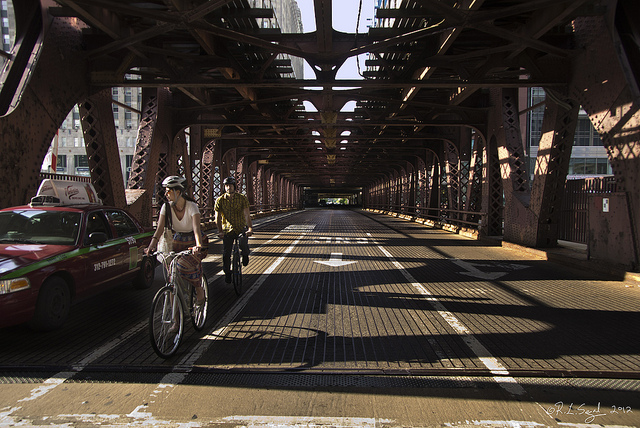Where Is The City's Promised Plan To Eliminate Traffic Fatalities?
By Stephen Gossett in News on Dec 29, 2016 9:19PM
In terms of cycling in Chicago in 2016, it was a case of best of times and worst of times. Best in the sense that our city was recognized as the most bike-friendly in the country, while a new state law clarified cyclists rights and bikeshare service was expanded, among other boons. But the worst was brutal, as six cyclists were fatally struck on Chicago streets in 2016.
To combat the problem—and, specifically, to attempt the elimination of traffic fatalities within 10 years—the city has been working with 10 local departments (CDOT, CPD, CTA and several others) on the Vision Zero initiative. Officials said the proposal would be made public this fall, but so far the report still remains to be seen. In a year in which the problem was so acute, where are the results?
They’re coming soon, according to CDOT spokesperson Susan Hofer. We can expect to see the completed findings “probably early next year, either January or February,” Hofer told Chicagoist. “The thinking was we would get it done by the fall or end of year, but that was overly optimistic.”
The delay is understandable and—assuming a timely, near-future arrival—forgivable, given the laudably large scale of the Vision Zero approach. “There are clearly a lot of moving pieces,” Hofer said of the plan, which will also include the input of local transit/cycling advocates and will use CDOT’s crash data to inform for TBD engineering projects.
Hofer declined to offer further specifics about what to expect from Vision Zero, but advocates have certainly been vocal about some problems that need addressing. The issue of roadway obstructions became more widely publicized after the death of Lisa Kuivinen, who was struck and killed as Kuivinen approached a construction-related lane blockage. Some manner of commercial-driver education seems imperative as well, as all six fatalities were caused by drivers of commercial vehicles. Also, Streetsblog has long convincingly argued for side panels on large trucks, which seems like a common-sense measure after several incidents involved right-hook crashes. And with any luck, there will be greater advocacy from the top for Idaho stops—which allow cyclists to safely preserve momentum by approaching stop signs at four-way stops as yield signs.
